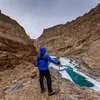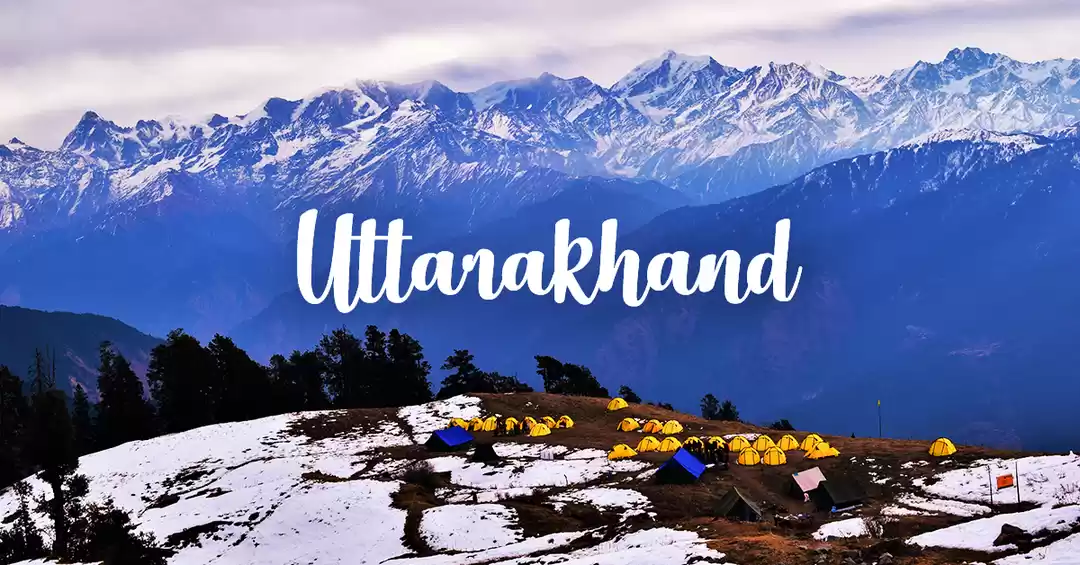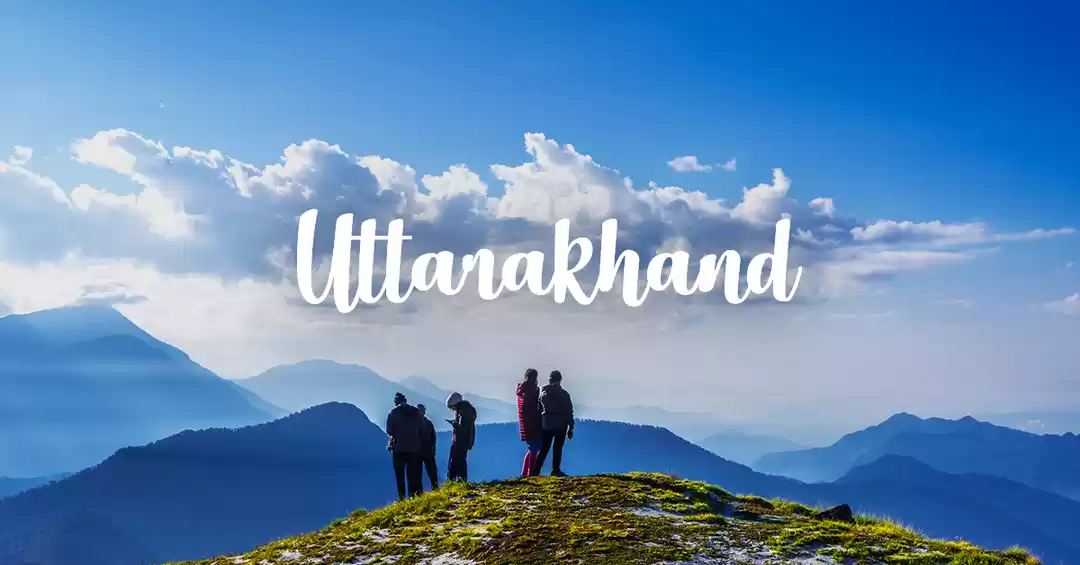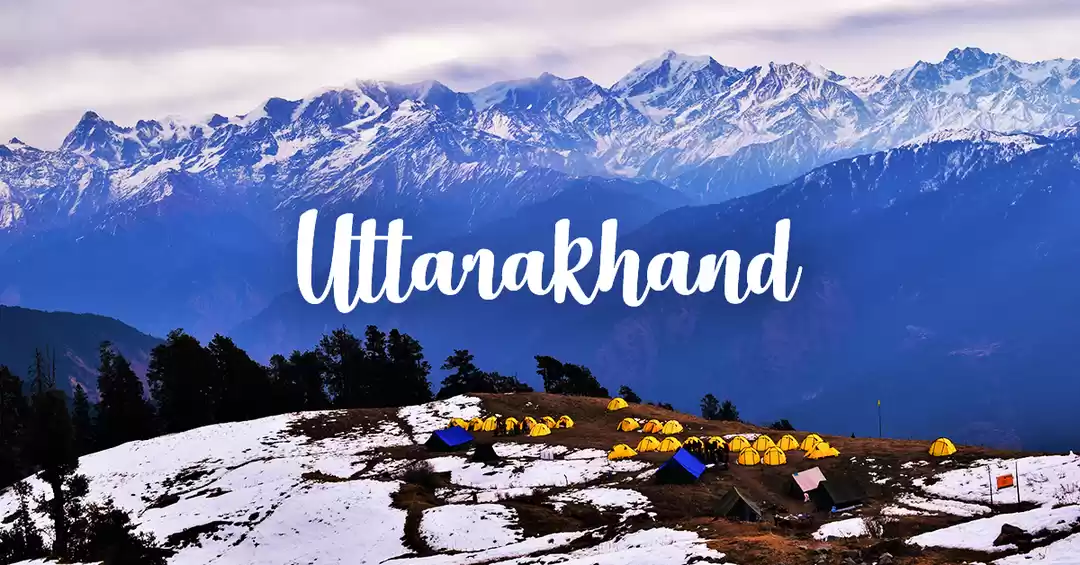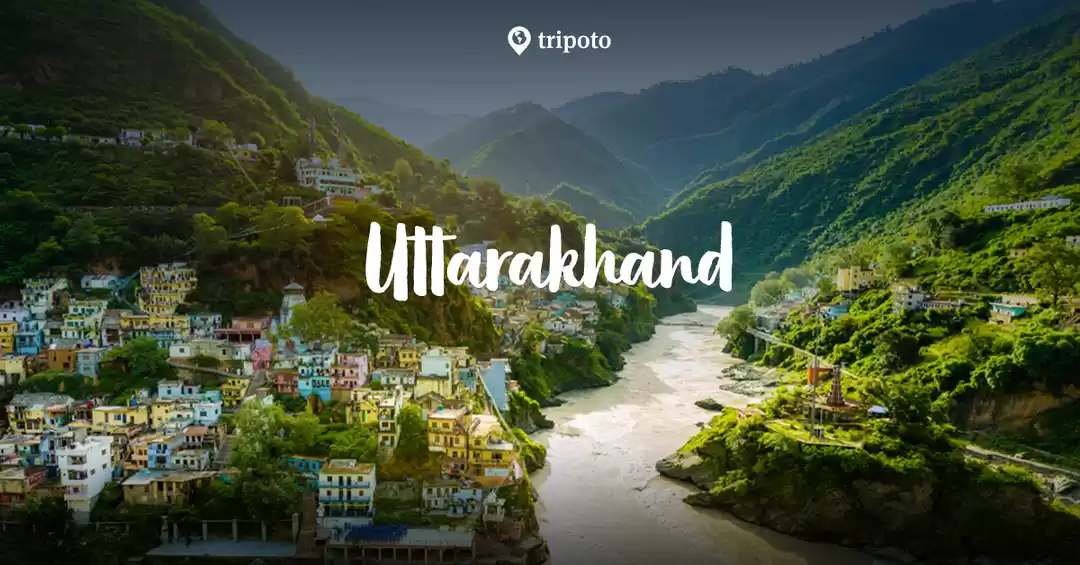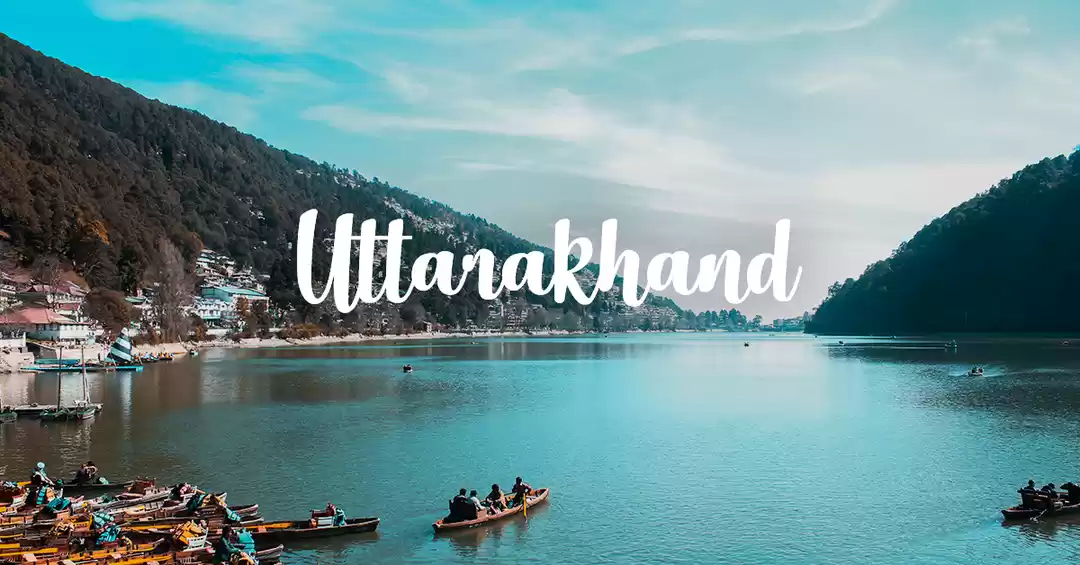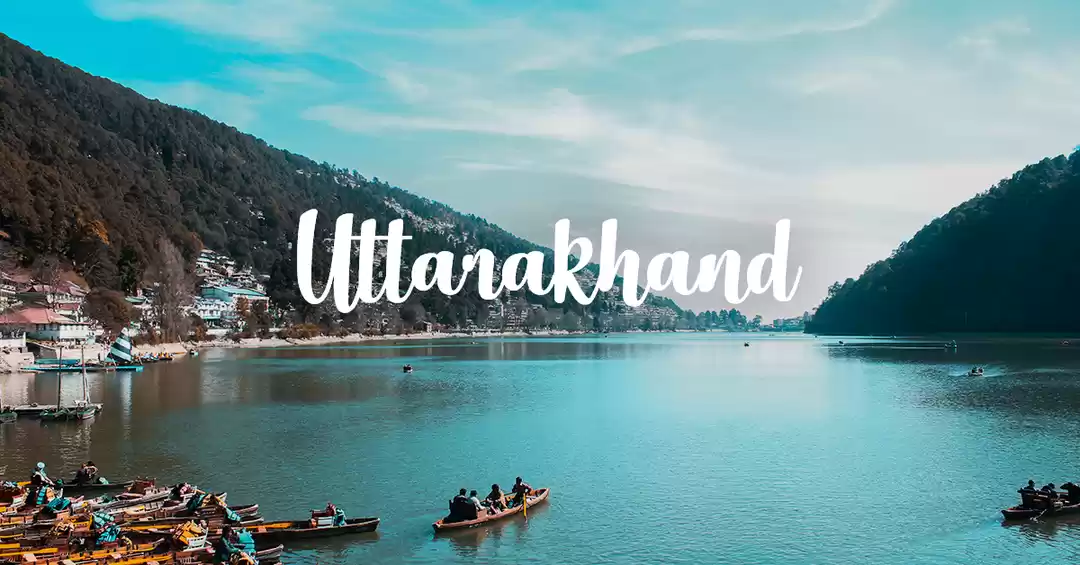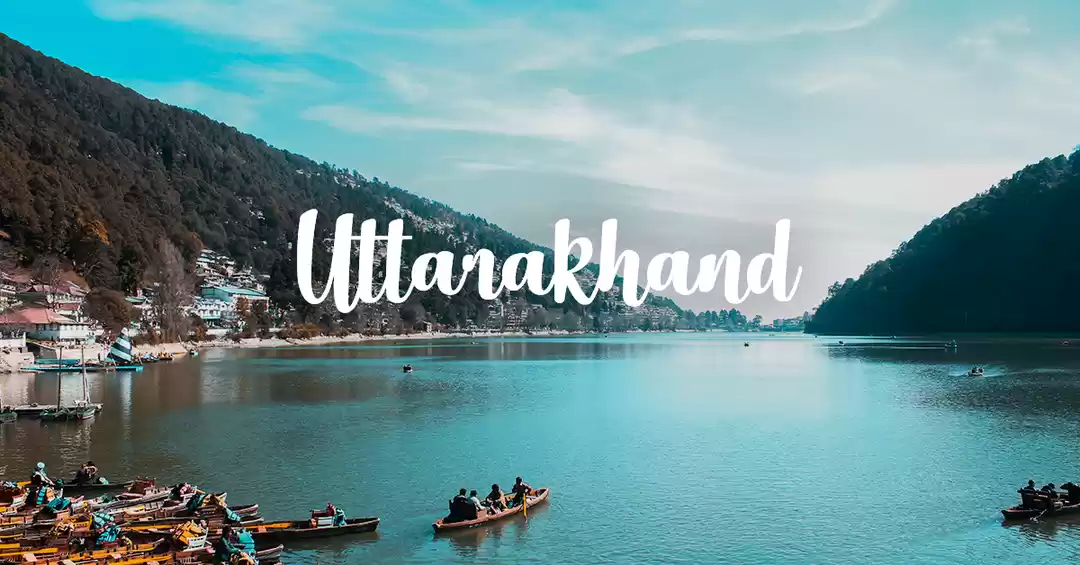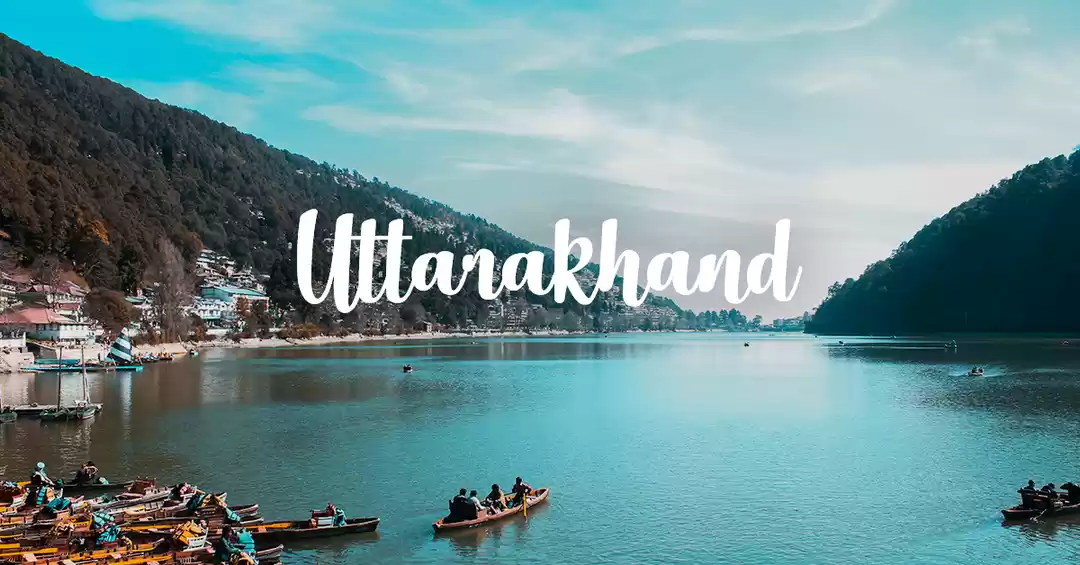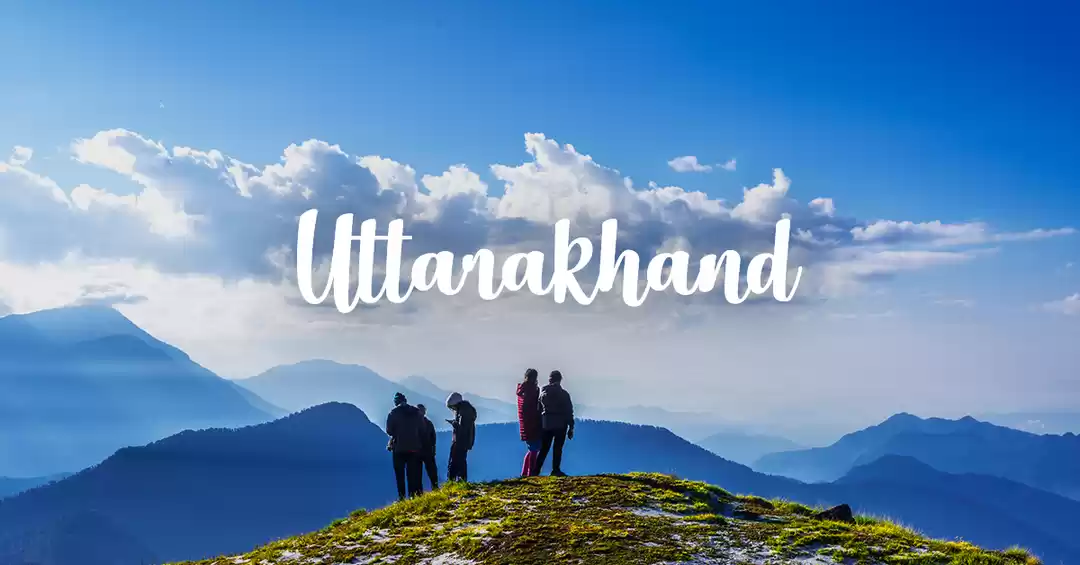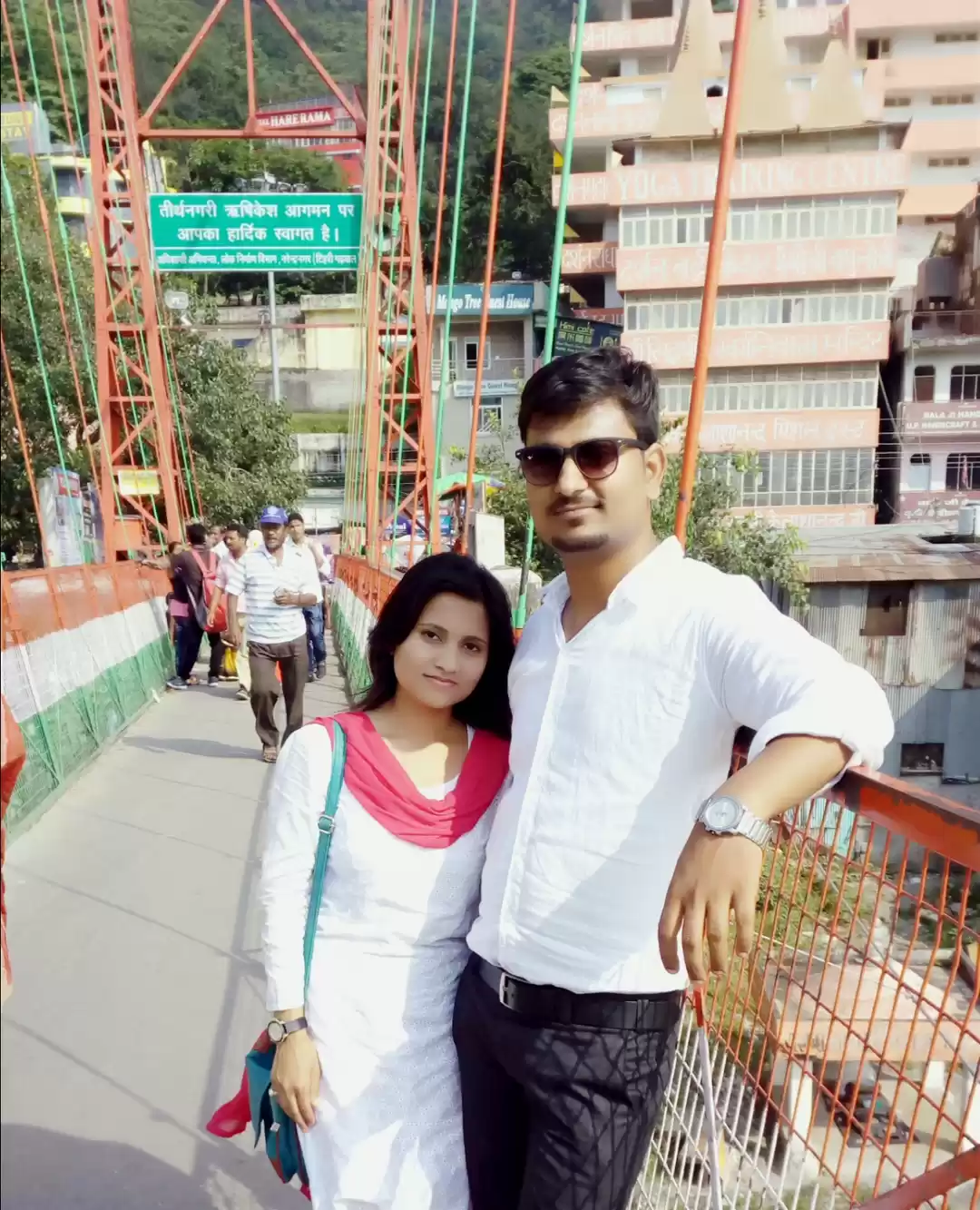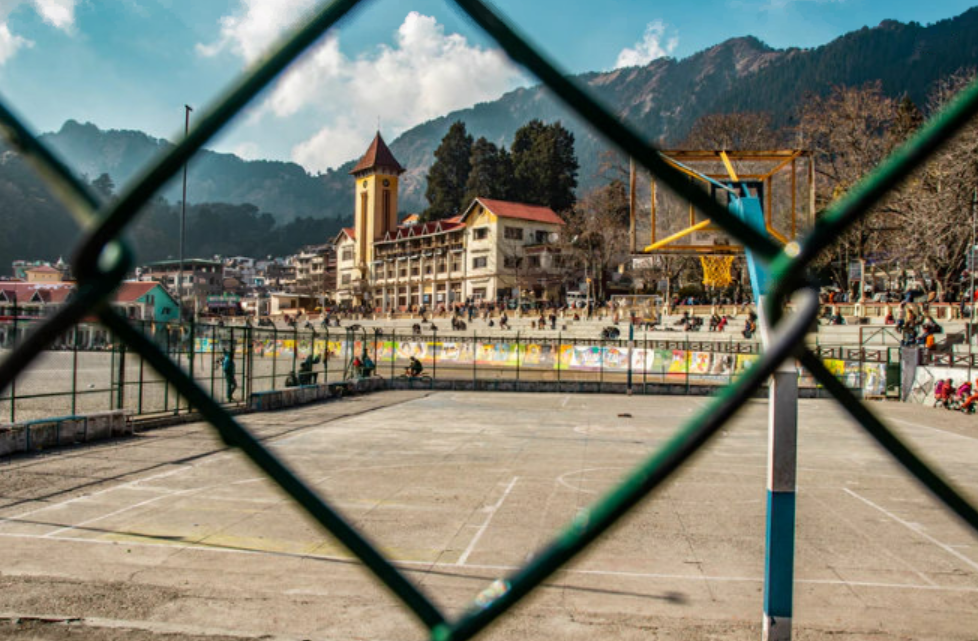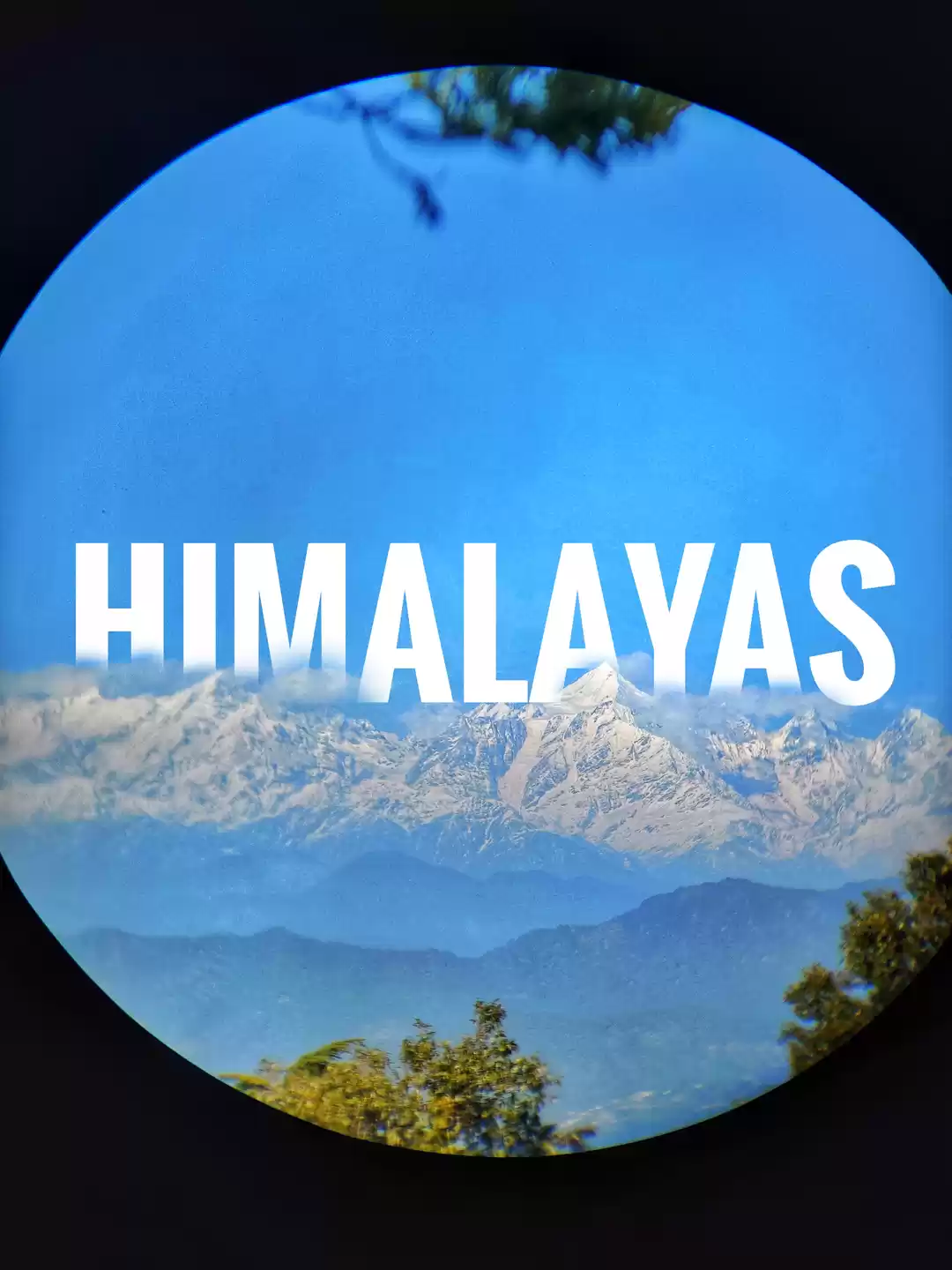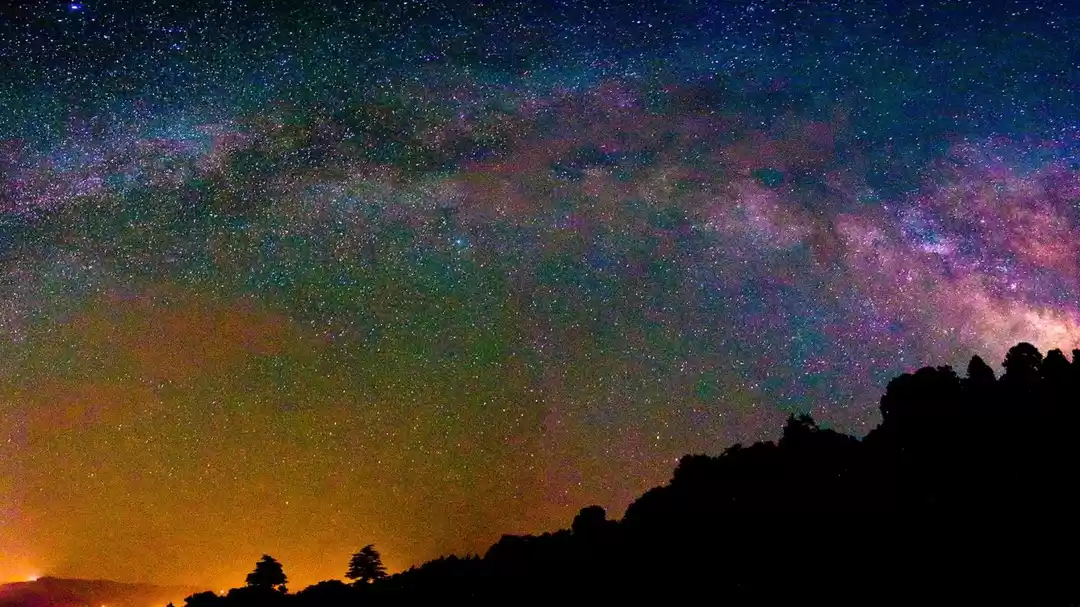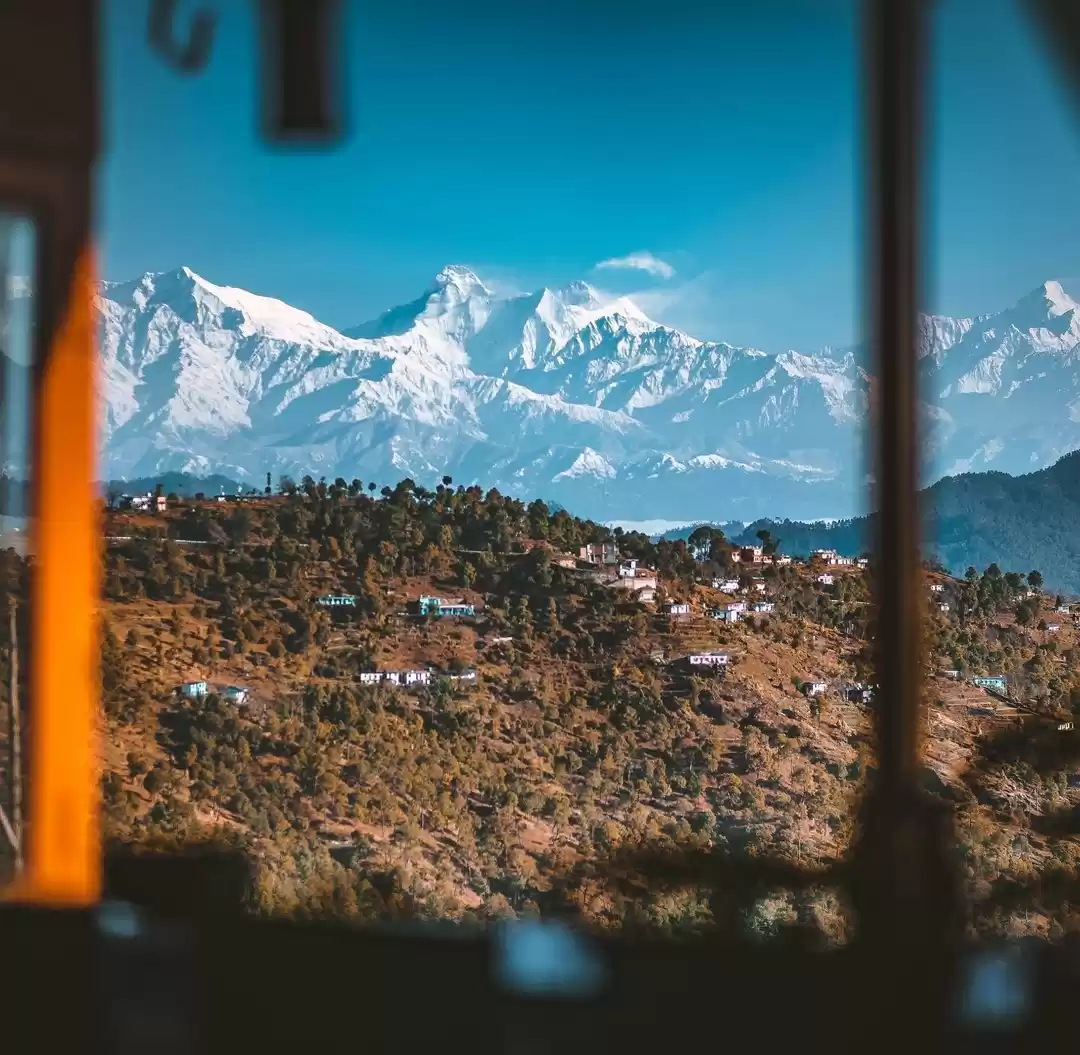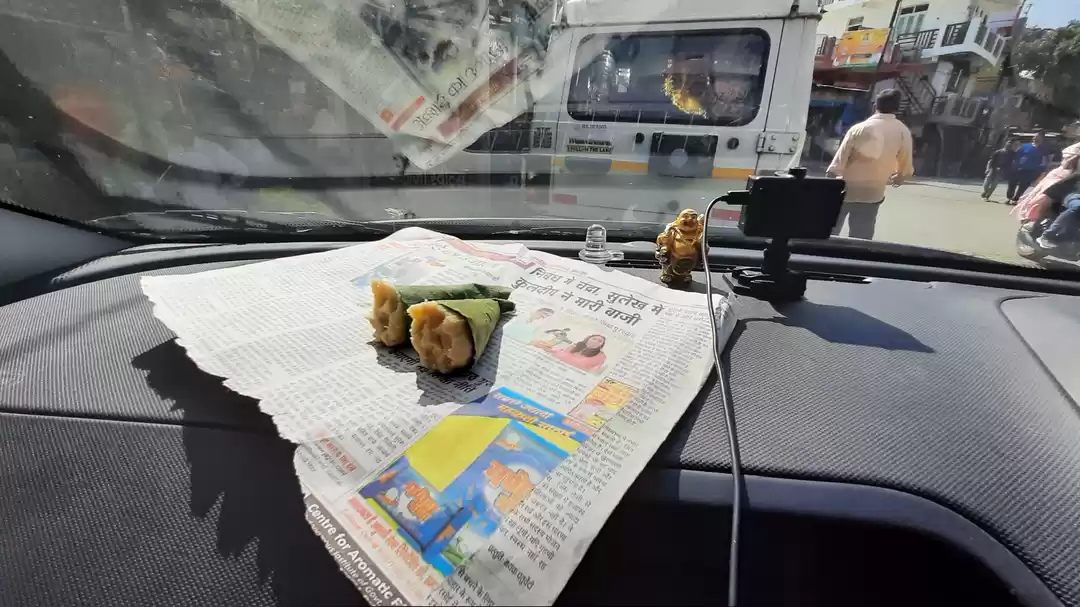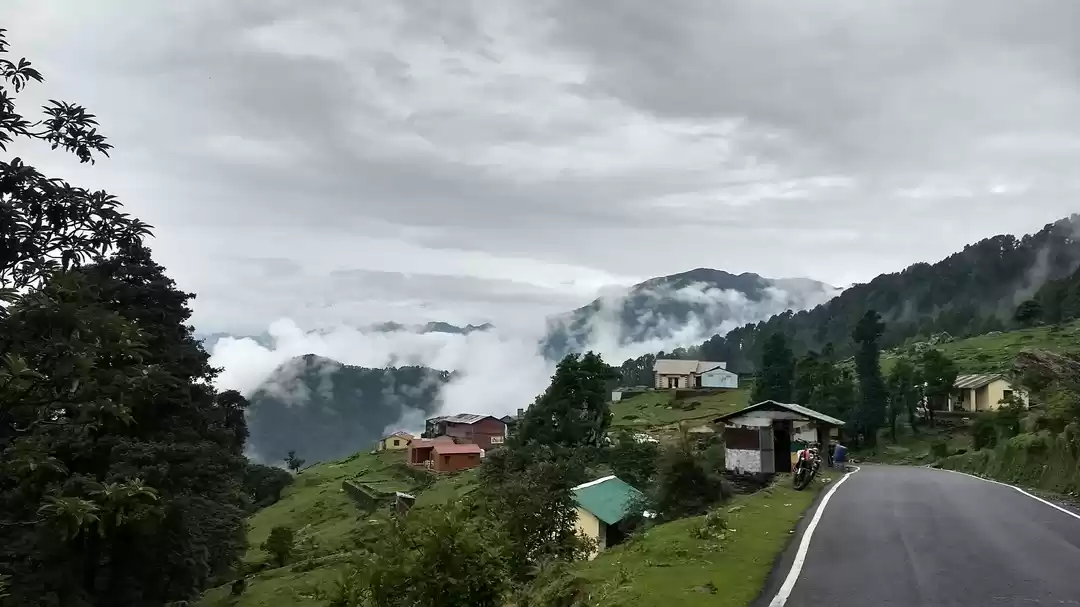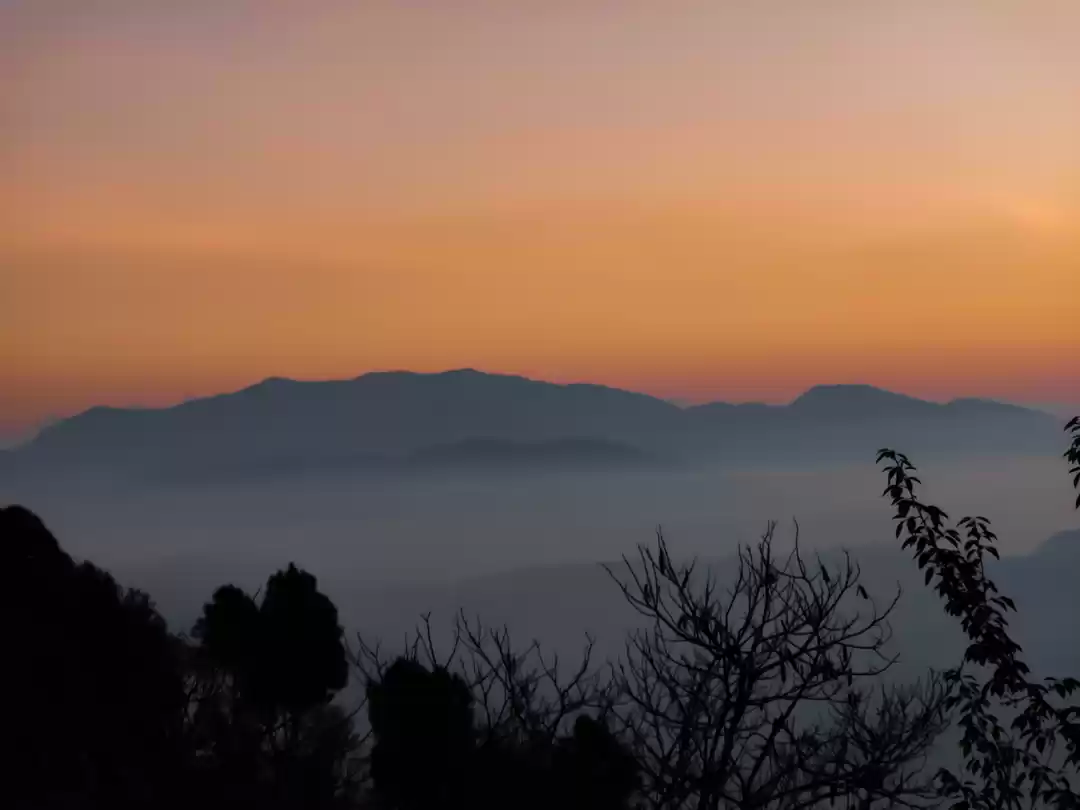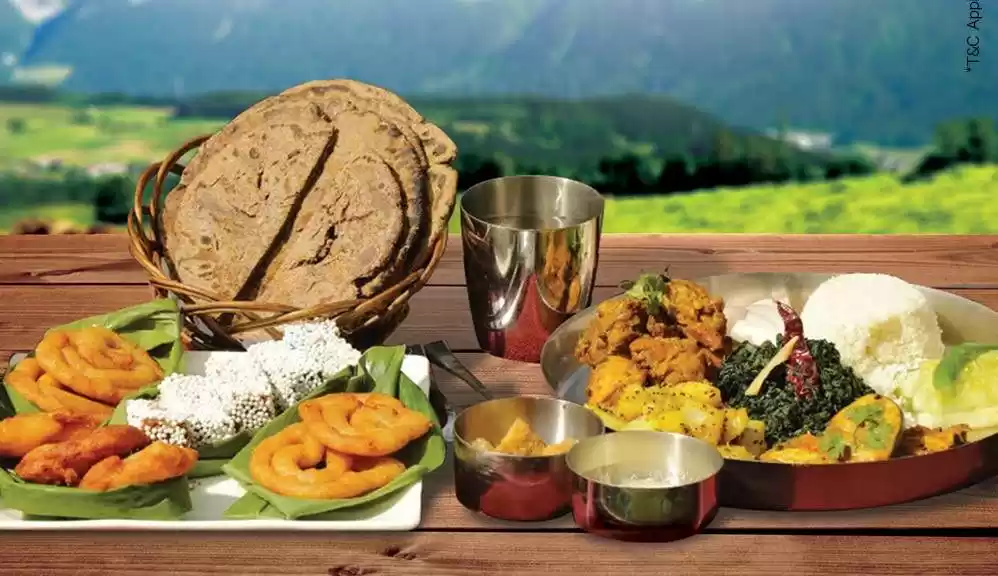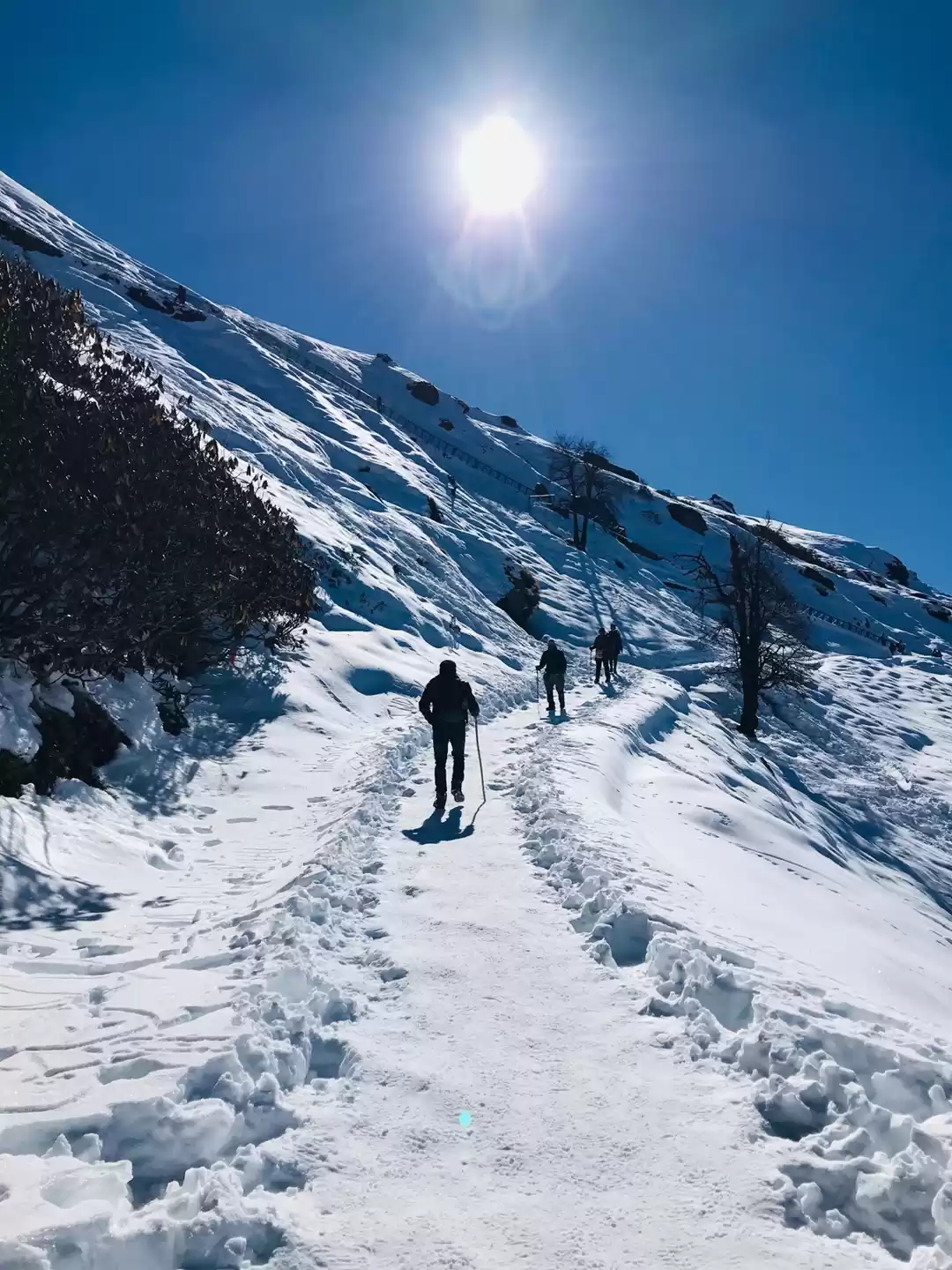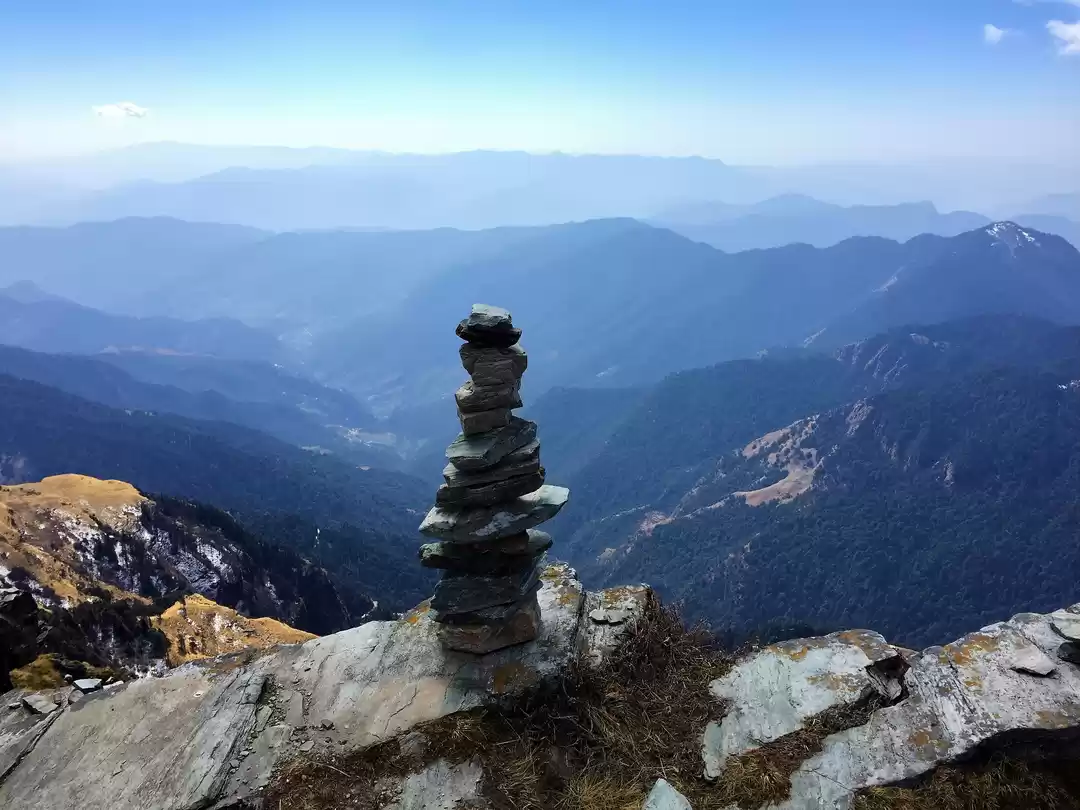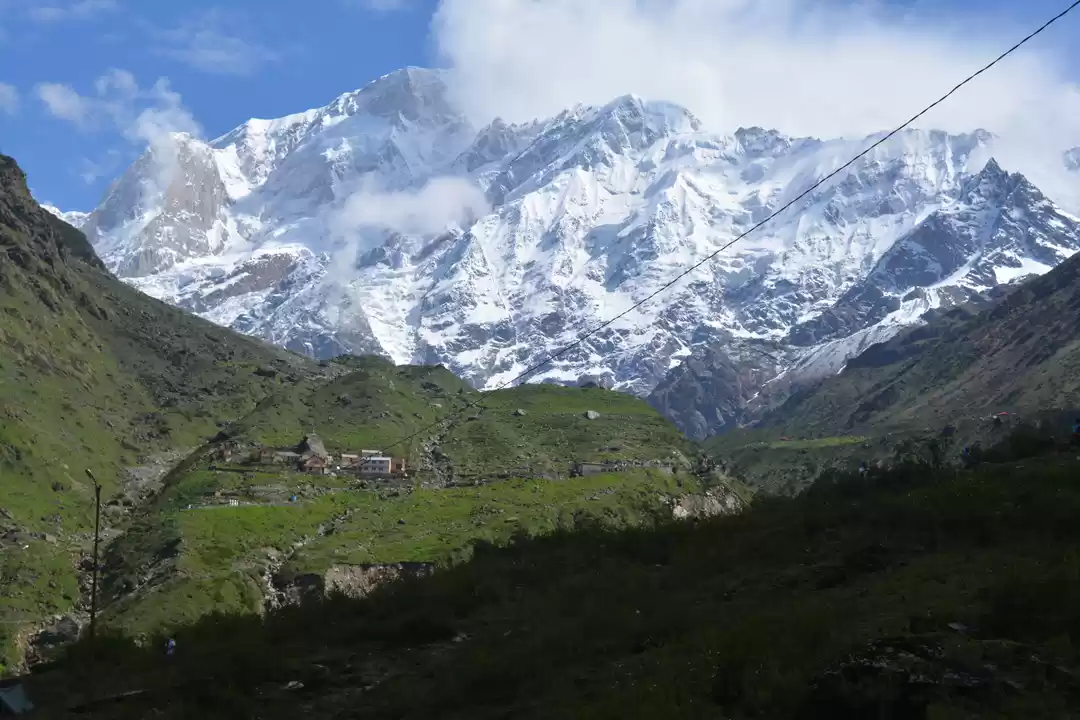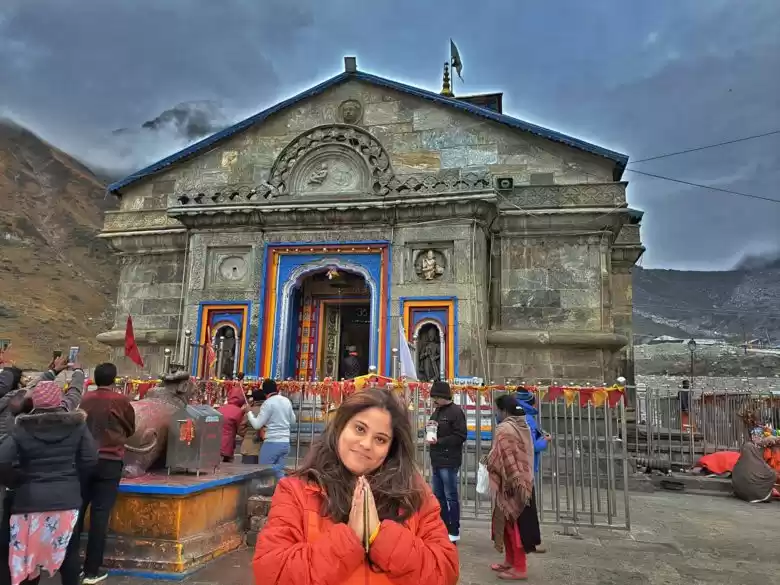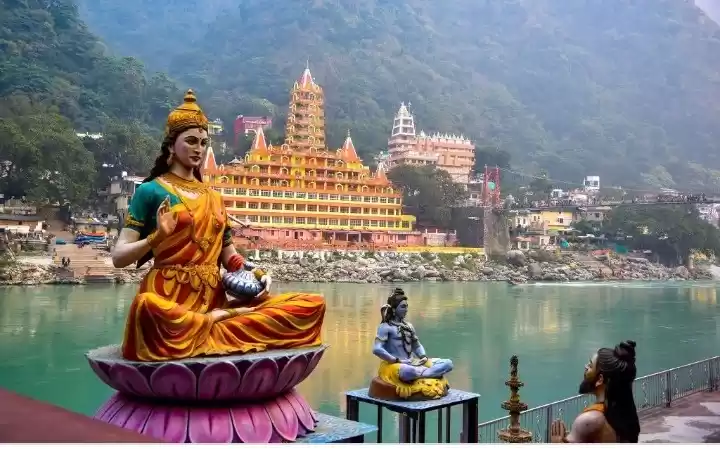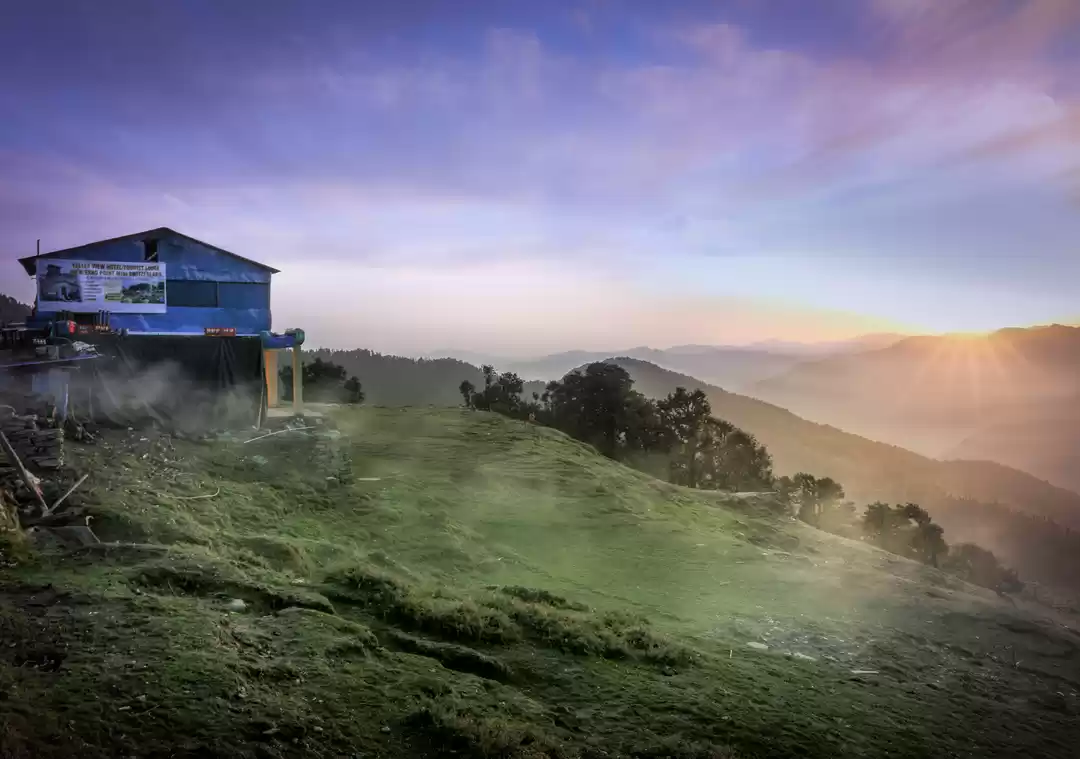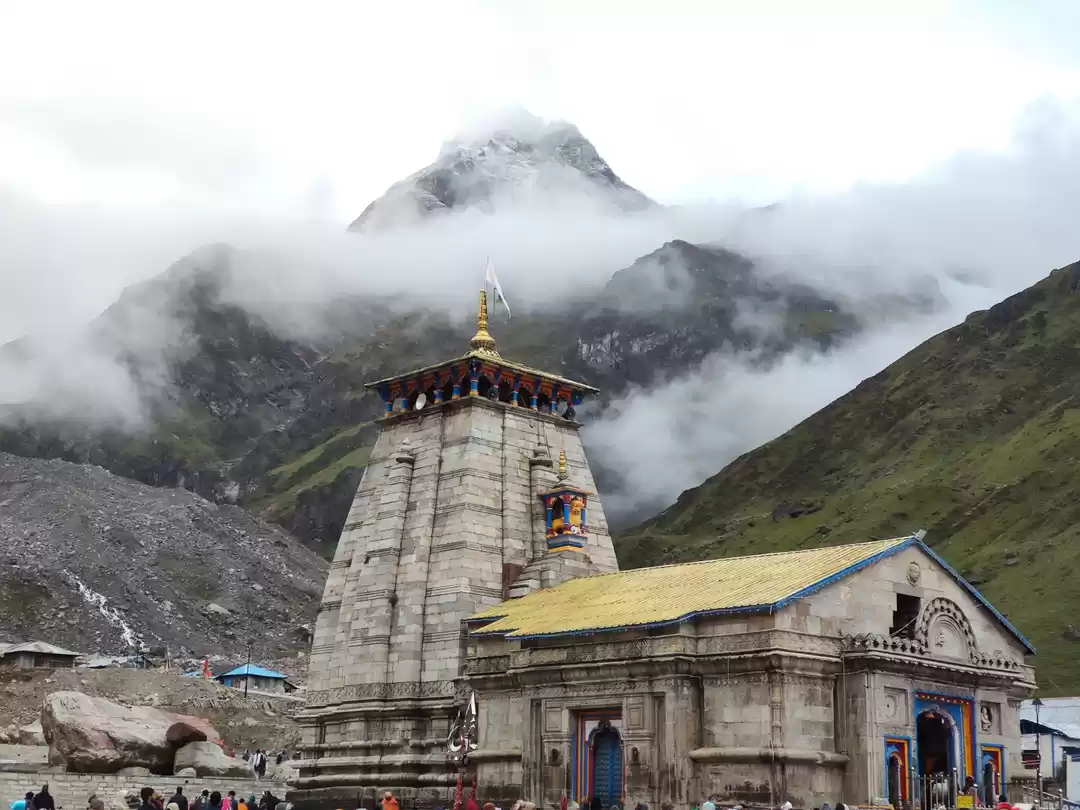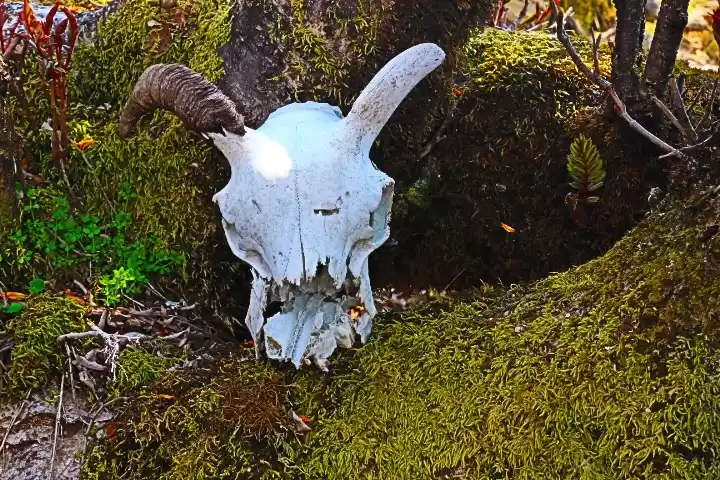
The Garhwal Himalaya situated in the Indian Subcontinent can be related to be very close to the Gods. The air out here is fragrant and spiritual. The snow clad peaks and the gurgling historical rivers like the Ganges, Bhagirathi emerge from here. As one sees all this, it is easy to imagine that this place is indeed the playground of the Gods. This region has been the abode of countless holy men who mediated and attained enlightment. The aura in some of the remote locations is indeed filled with auspicious vibrations. The Himalaya are filled with the power and passion of Lord Shiva and in this part of India , one can find more shrines dedicated to him than to any other.
Out here in the Garhwal ranges are five of the most important temples dedicated to Lord Shiva, known as Paanch Kedar. The most famous of them Kedarnath along with the other four thus constitute the Paanch Kedars. These are situated in remote accessible areas and test anyone who wishes to reach them. The follower of Shiva is taken far from the maddening crowds of civilization when he decides to worship him in these places tucked away and in the bosom of the Garhwal Himalaya. Lord Shiva was at home amongst the mountains and in Kailash, and this is what is synonymous with the Paanch Kedars. Those who undertake this trek will find the air filled with positive vibrations and a certain glow within which cannot be explained. The air is saturated with the presence of Lord Rudra and one can easily picture him striding across the mountain ranges, his matted hair mingling with the clouds and eyes looking in all directions and downwards on to the wellbeing of his followers.
So which are these shrines of Lord Shiva?
These as per the laid down order are
Kedarnath, Tungnath, Rudrananth, Madhmaheswar and Kalpeshwar. Kedarnath is also a part of the chota char dham while the other three are Badrinath, Yamonatri and Gangotri.The Garhwal region abounds in emblems and figures of Lord Shiva and these five shrines sprawled over the vast Kedar valley at altitudes ranging from 1500 mt to 3680 mt speak volumes. Kedarnath (3584 mt), Tungnath (3810 mt) , Madhmaheswar(3289 mt),Rudrananth(2286 mt) and Kalpeswar(2134 mt).
These shrines with the exception of Kalpeshwar are only open for few months each year and remain snow bound the remaining part of the entire year. They can only be accessed by treks across mountain ranges. The following article deals with an overview of details & experiences for accessing these locations.
Background. The Mahabharata is one of the oldest epics in the world and was written by sage Vyasa. There is no subject that it does not deal with. The Pandavas after their victory in the epic war settled down at Indraprastha. At the end of their human lives they decided to give up their kingdom and go to the Himalaya, mediate to seek forgiveness and blessings from Lord Shiva as atonement for their sin of killing family members (cousins) . Lord Shiva did not wish to meet them when they reached Kashi, which was said to have a presence of the Lord always. Hence they continued northwards and at Guptakashi they had a glimpse of the Lord who then transformed into the shape of a bull (Nandi) and dashed Northwards. It was at Kedarnath where the Pandeva’s could finally catch up with him and here the Lord dived into the earth in five pieces, with the Hump rising at Kedarnath, arms at Tungnath , stomach at Madhmaheswar , face at Rudrananth and hair locks at Kalpeshwar. The Pandeva’s built the five shrines at these places and worshipped him thereby making him lose his anger and blessing them thus enabling them to atone for their sins.
After this they departed earth and their mortal bodies while proceeding towards Swargarohini . That tale can be read here
Link :https://traveldreams.live/2017/04/01/trek-to-the-lake-of-truth-satopanth/
Kedarnath
Kedarnath, home of Lord Shiva, of all the places that I have visited till date this is the place that holds very dear to my heart, there is something out there that draws one to oneself within, situated between towering mountain peaks desolate in looks and cold all the time yet the warmth that infuses inside the heart somehow, that is irreplaceable. I felt I could stay here for days to come and could feel the drive that forced many a mendicant to remain at Kedarnath braving the hostile climatic conditions
The Kedarnath shrine, one of the highest revered shrines in India, is more than 1000 years old. Kedarnath is deep in the Himalayan mountains and the backdrop is a frame of huge snow covered peaks including Kedar peak and Kedar dome. The temple is situated at a height of 3584 mts above sea level and the river Mandakini runs alongside, emanating from high up in the Himalayan peaks. The Shiva lingam here is a natural rock manifestation in shape of a buffalo hump (swayambhau) The temple is made up of huge granite slabs while the inner walls of the assembly hall are decorated with various figures of deities and idols are also enshrined. There is also an inner sanctum where the main idol is kept. The inner assembly hall also has Nandi seated, eyes fixed on the Lord, and devotees whisper their message into his ears to convey to the Lord. A huge sculpture of Nandi is also there outside the temple in the courtyard facing the inner sanctum ready to fulfill any task of the Lord.





The present temple was built by Shri Adi Shankar Acharya, founder of Advaita philosophy who was sent on this earth to reestablish the Vedic way of life. He decried that the head priest of the temple will be from Kerala, Namboodiri Brahmins and to this day the tradition continues. The main aarti is the Evening Aarti (Sandhya Aarti) and morning Aarti (Mangal Aarti). The vibrance in the air and the intense dedication in which the head priest performs these 45 min aarti infuses an aura inside the temple and no one can remain unaffected.
Presently post 2013 calamity, the administration of housing the devotees and related requirements is undertaken by NIMMS in a very professional manner. There is no grievance in respect of accommodation and fooding because of the precise way of handling this aspect. Bio metric scans have now become mandatory for all those who wish to visit the shrine and are undertaken at various places like Guptkashi , Phata , Gaurikund etc.
Kedarnath, the most remote of the char dhams can be reached by a 16 km trek from Gaurikund. The temple opens around April end post Maha shivratri and closes at the onset of winter around Diwali. It is still the way it was decades back and the floods of 2013 have washed away all the commercialization that had crept in over the years.
The trek starts from Gaurikund passing through important way points where rest and refreshments are available. Additionally, horses are available for those who cannot trek and also porters are available. It is recommended to start early from Gaurikund in order to reach Kedarnath by around four in the evening because the temperature drop is severe as one ventures deep into the mountains.
The path this time was is on the right of the mountain valley as opposed to the original one which was on the left which had been completely destroyed by the 2013 floods, the scale of devastation was so evident even to this day and I could imagine what must have happened on that fateful night and the next morning. The devastation was a constant companion till Garud chatti and Kedarnath itself as we trudged through snow and ice on paths that had been roughly cut and cleared by the BRO in order to ensure that the temple opened on time.
So many pilgrims come to this holy place with age or social standing hardly a deciding factor, aged individuals making the trek over 16-17 hours to reach the place in the darkness and then going straight to the temple to lay eyes on the idol of Lord Shiva. It is very difficult to describe what the eyes see in places like this, it has to be seen and experienced individually. But I would definitely recommend that a night stay option
Trek Duration 01 day one way




Jump off point Gaurikund or Guptakashi ( as per terrain situation)
Trek distance From Gaurikund: 16 kms one way
From Guptakashi : 22 km one way
Stay options Basic stay options @Guptakashi
NIMS managed @Kedarnath ( both deluxe & economy)
Weather Chilled at Kedarnath, warm clothing, multi-layers’ essential
Read my link :https://traveldreams.live/2017/05/03/uttarakhand-an-ode-to-the-himalaya-and-spirituality/
Interlocks Bio metric and health scan essential @Guptakashi , Phata & Gaurikund
Essentials Well broken in shoe and comfortable clothes , water , cap , walking stick, sanitizer
Tungnath
A pilgrimage to the Himalayan shrines cannot be done with time as the deciding factor. The treks offer spiritual as well as a profound satisfaction and filling on all levels of the inner individuality. If there is one thing that the Himalaya teach, it is that one needs to have faith in the God above. Nothing and nobody can help oneself in these high reaches other than the almighty. Without faith, there is not much point in doing these treks. The value of the trek is not in reaching the place but in the effort of getting there. Each step can either be a dream or a scream depending on how one has prepared for the trek.
The mild aroma of marigold and sandalwood, gentle puffs of air, vistas of snow clad mountains and exquisiteness, make this trek an exceptional one and the sight of the temple lets the fatigue and exhaustion vanish. This temple has a lot of legends connected with it and one has been stated above.





Tungnath ji , the highest Shiva temple in the world and one of the five Paanch Kedars. It is believed to be more than 1000 years old and is generally accessible only in the non-winter months The highest of the Paanch Kedars , located in the mountain ranges in Rudraprayag distt, this rocky terrain can be reached after a steep 05 km trek from Chopta through alpine meadows and rhododendron thickets. A kilometer ahead one can reach the moon rock known as “Chandrashila” from where one can see 270 deg view of the Himalayan ranges and some major peaks like Chaukhmaba , Naina devi , Trishul etc. While one is trekking one also comes across another famous hillock known as Raavan Shila and then the temple of Lord Ganesh, son of Shiva and Parvati .
The temple compound houses the main shrines while a number of small shrines of other gods surround the temple. The sacred rock black in color denotes the arms of the Lord and they are worshipped. The dome of the main temple with wooden stage has sixteen openings and stone slabs have been used to make the temple roof. The entire temple is itself constructed of stone similar to the other Shiva temples of this region. Lord Ganesh occupies a prominent part in the temple complex, a short distance away is the shrine of Goddess Parvati . The huge hillock just behind the main shrine to me signified the image of the Lord himself watching over this auspicious and divine place.
The priests of Tungnath are from the village of Maku , situated a bit lower than Chopta and it is out here that in the winter months that the idol is enshrined. The interior of the temple is small and the inner sanctum contains the main idol. The temple remains closed after Diwali and opens post Shivaratri.The main aarti is something that needs to be attended and one must make it a point to attend the same. But for that one will have to stay the night at Tungnath itself.
A stated one needs to trek from Chopta, to reach Tungnath. The trek route is fairly well defined with numerous rest stops in between, benches have been provided for the same. This is a fairly easy trek and many do it as a part of Beginners trek, combining the same with Deoriyaa Taal, a mystical lake nestled close by.
To reach Chopta, one needs to take a private vehicle or the state transport bus from Rudraprayag or further down Rishikesh. Additionally, one can also reach Chopta from Gopeshwar. There are small tea houses to stay at Tungnath and better hotels at chopta.
The intense drop in temperature dissuades many from staying the night at Tungnath and Chopta is much preferred on account of the same.
Trek Duration 01 day one way
Jump off point Chopta
Trek distance 05 km one way
Stay options Basic tea house stay options @Tungnath as well as @Chopta
Read my kink :
Weather Chilled at Tungnath, warm clothing, multi-layers’ essential
Read my link :https://traveldreams.live/2017/05/03/uttarakhand-an-ode-to-the-himalaya-and-spirituality/
Additional Reach Chopta from either Haridwar or from Gopeswar . Taxi and bus available
Essentials Well broken in shoe and comfortable clothes , water , cap , walking stick, sanitizer
Rudrananth
Rudrananth, the highly revered temple in the Garhwal Himalayan region, is one of the toughest to reach as well as the most isolated in terms of number of devotees visiting. Generally, only trekkers come here.
The temple is situated in between rhododendron forests and mountainous rocky region. One can see the Himalayan peaks of Nanda Devi, Trishul while on the trek to Rudrananth. There are three different trek routes to reach Rudrananth,
Route 1: Helang village >Urgum village >Kalpeshwar >Dumak >Rudranath ( 70 kms )
Route 2: Sagar village > Liti Bugyal > Panal bugyal >Pitradhar > Rudranth
Route 3: Mandal villahe > Anusuya devi temple >Hansa bugyal > Naola pass > Rudranath
My suggestion or rather I had planned to trek to Rudrananth using the Route I i.e. starting from Helang village. In this route one has to reach Helang village which is 240 kms from Rishikesh by road. From Helang, the route takes one through hill side villages of Devgram, Dumak, Panar and Sagar. Additionally, one treks through meadows known as Bugyals as well as alongside the Rudra Ganga river and through long mountain ranges as we cross the ridges to transverse different ranges. It is 05-day trek from Helang and completed at Sagar village from where one can again take a bus to Rishikesh. This trek is definitely to be done with a guide as well support staff for one would be passing through forests as well as crossing streams.
The villagers of Dumak and further ahead are actively engaged in collecting various medicinal herbs that are sold to the pharmaceutical companies that manufacture medicines and is one of the main source of livelihood out here. Additionally, this region abounds in the Himalayan brown bear hence one has to be careful when walking down on the trials.
Rudrananth shrine where the face of the Lord appeared, is surrounded by huge rock walls and boulders. It is bounded on each side by ponds – surya kund , Chandra kund , Tara kund and Manans Kund. The Bandarpoonch range is very prominently visible from here. Near the temple is a stream of sparkling water known as Vaitarini – the water of Salvation. There are not much staying options out here but if required one can stay here else trek back to Panar village.
Trek Duration 05 days
Jump off point Urugam village
Trek distance 70 kms
Stay options Basic tea house stay options
Weather Undertake the trek post monsoons in order to avoid rock fall and landslides
Additional Reach Urugam from either Haridwar or from Joshimath. Taxi and bus available
Essentials Well broken in shoe and comfortable clothes , water , cap , walking stick, sanitizer
Madhyamadheswar
The fourth temple in the order, the place where the middle torso of the Lord Rudra is worshipped , the temple is at an altitude of 3289 mts and is located on the slope of a ridge 30 kms from Guptakashi. The trek point beginning is the village of Raasi which can be reached from Ukimath. One reaches Ukimath from Haridwar after a 8 hour road journey.
The journey from Ukimath to Raasi is generally covered in around two hours and passes through small villages en route called Mansuna ,Raounke ,Ulliana . The mode of transport to all these places is either the jeep or small mini buses. There is only one bus which goes every day to these places and for the jeep well one has to wait till respectable number of passengers are accumulated. Basically the pace of life is slow and involves lot of waiting and planning in case one has to move in these interior parts of Uttarakhand. This is not the place of android phones and multi-tasking lifestyle.
By 630 in the evening I was at Raasi and the walk from the road till Umeid’s house was a bit awkward as I was subjected to curious stares from just about everyone, as it happens in small villages the word spreads quickly that an outsider has come for trekking. Anyways with a smile on my face I greeted all those whom I met and soon was at ease. The evening was spent in the company of the local school teacher and we had quite an engaging discussion on various topics. In the between I did sneak up to the terrace and looked at the great army of stars in the clear mountain night gazing down upon me




The day started well as I was up by six in the morning, overflowing with emotions and excitement of watching the sunrise amongst the mountains. After a few clicks I decided to visit the local village temple which had been recently renovated by the villagers. It was a pleasant feeling to visit temple devoid of the usual mass of people streaming in which happens and yes I too am a part of that horde, but for a change here there was no one other than the occasional devotee. Watching the people go about their daily chores; from the hard working women who were segregating the hay piled on roof tops preparing for the winter ahead, then there were the school kids on the way to school while the village elders gathered to talk whatever was the topic for the day. There was everyone doing some activity or the other and I tried to integrate myself into this frame
The trek path is narrow skirting the mountains that surrounded Raasi as we made our way to the first way point which was the village of Gaundar around 6 kms away. Enroute we came across womenfolk carrying huge bundles of grass meant for hay for the livestock. The views of this walk were great as we could see the Chaukhamba massif all the while and then there were the forests of pines and birches which we walked into.
After a sumptuous lunch we departed forward eventually we reached a place called Sartaza nearly 4 km ahead of Gaundaar where we rested for 30 min. The small tea house was run by a solitary lady who was all alone in this wilderness without electricity or phone connections or neighbors, tending to her small field, two goats and the tea house, living her life caring for her four sons. Her husband had expired in the 2013 kedarnath disaster. Looking at her bustling with activity and determined in the face of such odds … made me feel so conscious of the hardships that others endure and yet they still find the strength to go on …
From the solitary tea house at sartaza we then moved ahead towards Nanu which was another 5 km of uphill climb. We reached Nanu by five in the evening and what a feeling it was to stand without a load on my back on a narrow stretch of clearing on the edge of a big mountain inhaling the fresh mountain air and having the sense of accomplishing something; the quest was underway and it was very much real.
As night fell and the rains descended high in the mountains, we huddled in the kitchen of our hosts and the lady of the house treated us to a delectable dinner cooked over wooden fired chulahs in the glow of solar lamps. Tomorrow was to be a new day and a new goal.
Nanu to Madhmaheswar
Early in the morning I was up during the hour of the nautical dawn which is the period just before sunrise and set up the tripod to do some photography, standing in that small clearing at the edge of the mountain looking outwards across huge mountain ranges waiting for the sun to arrive.
today’s target was the holy Madhmaheswar. The fourth of the Paanch Kedar. Soon after around two km we reached Maikuma Chatti, the weather deteriorated as we moved ahead and it was all mist n grey clouds … which sapped away at my morale. I feel blue skies and warmth of the sunshine are great motivating factors. As we walked our way through the dense wooded slopes of mountains towards Madhmaheswar we met many trekkers who were returning after a darshan of Madhmaheswar.




The view of Madhmaheswar is truly fantastic as one emerges from the tree line and comes across a clearing in the forest and lo behold one sees the magnificent Madhmaheswar ji outlined against the backdrop of the forest behind. It was a totally awesome feeling I must say. We reached Madhmaheswar by around 12 in the afternoon and I was able to get a darshan as I was the only outsider there barring the priests and few individuals who run an odd homestay/restaurant.
The legend of Madhmaheswar goes as stated above and one can see the Lord’s middle torso out here. The priests are from the southern part of India as are the priests of Kedarnath, Ukimath, Tungnath, Rudrananth and they rotate as per the sequence decided. The temple is a replica of the Kedarnath temple. There are two main aarti’s, the morning aarti and the evening aarti. There are two small shrines outside that contain carvings of the Lord and Maa Durga (in the form of Mhishasuramardani ) the slayer of the demon – Mahishashura.
It is to be noted that the method of rituals and aarti’s are as per what was decried by Shri Adi Shakaracharya himself and the same is followed in all the Paanch Kedars even to this day.
Trek Duration 02 days one way
Jump off point Raasi Village
Trek distance km one way
Stay options Basic tea house stay options @Nanu as well as @Madhmadheswar
Weather Chilled at Madhmadheswar &Nanu, warm clothing, multi-layers’ essential
Additional Reach Raasi from either Haridwar. Taxi and bus available
Essentials Well broken in shoe and comfortable clothes , water , cap , walking stick, sanitizer
Kalpeshwar
Kalpeswar is the last temple in the order of the Paanch Kedars and is the only one which is accessible throughout the year. The Lord is worshipped here in the form of his matted hair. There is an old Kalpavrikhsa tree here which is said to grant wishes as per mythological beliefs.
One can reach here by taking a road transport from Haridwar which would reach Joshimath on the first day and the next day one would proceed onwards to reach Urugam village. The village is reached post crossing Helang village and from the road head one needs to walk across for around three kms on a well paved road.





After a visit to the temple which is another three kms from Urugam, one can decide to trek further towards Bansinarayan temple and camp out there for the night. This would be a steep trek wherein one would leave the village far behind and climb up the steep mountain slope through dense forested lands for around six kms before finally arriving at Bansinarayan temple. The temple is a 8TH century built and houses the idol of Lord Krishna, it is said that Sri Adi Shankaracharya was instrumental in setting up this ancient temple. The unique feature of this temple is that the sun rays fall directly inside the temple onto the shrine before they touch any other part of the earth.
From Bansinarayan temple one can see the entire great Himalayan Range including Nanda Devi, Nanda Ghunti , Dronagiri , Trisul and various other peaks that I am not aware of … they are lined up one after the other and it is a sight to see.
Trek Duration 01 day for Bansinarayan one way
Jump off point Urugam
Trek distance km one way
Stay options Basic tea house stay options @Urugam village & tent stay @Bansinarayan
Weather Chilled at Bansinarayan, warm clothing, multi-layers’ essential
Additional Reach Urugam from either Haridwar or from Joshimath. Taxi and bus available
Essentials Well broken in shoe and comfortable clothes , water , cap , walking stick, sanitizer
The trek to these Paanch kedar does make one introspect a lot and maybe even look into the way individual life is being led. Hope this article would ignite the desire to go in person to these places , wandering through the Garhwal Himalaya guided by belief and faith .
For an in-depth visual journey , click on link
https://traveldreams.live/2017/05/30/belief-faith-the-paanch-kedar-a-trek-into-the-less-visited-trails/
-

